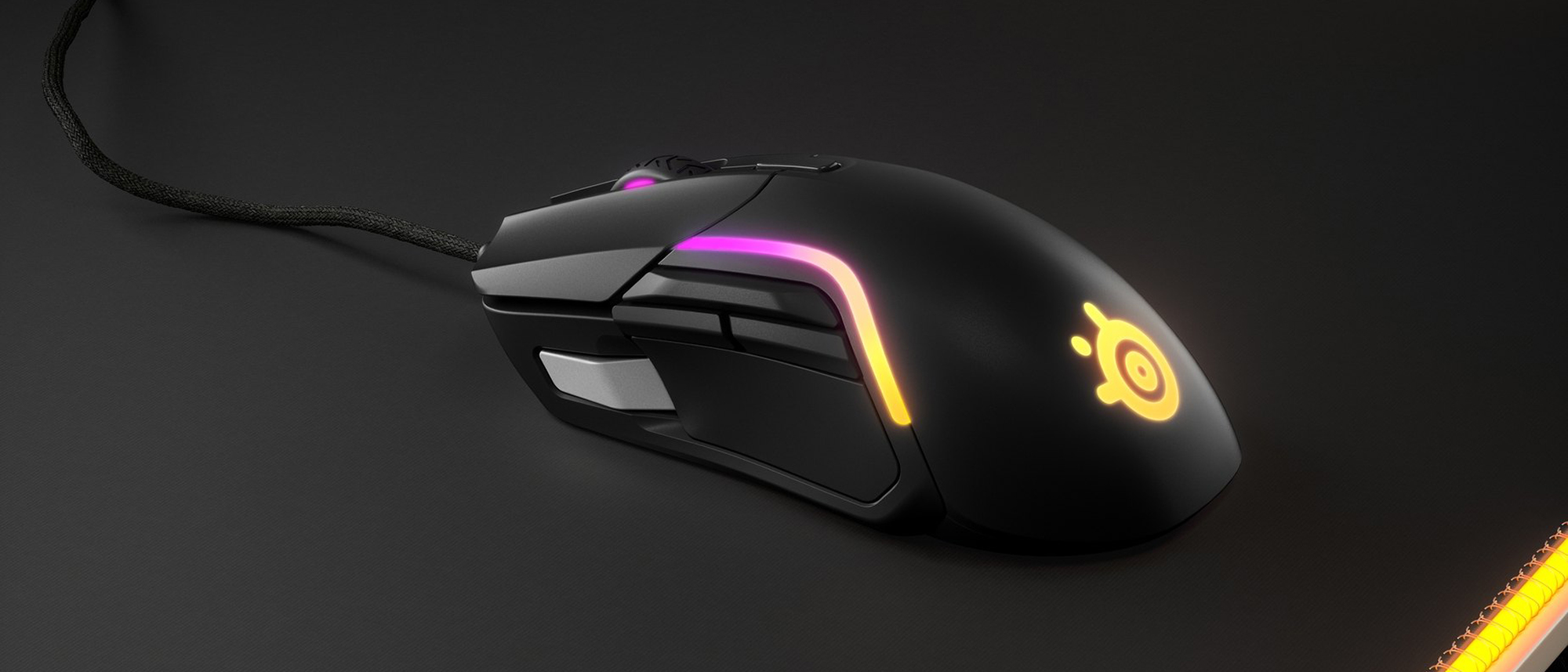Tom's Guide Verdict
The SteelSeries Rival 5 incorporates the best features from previous SteelSeries gaming mice, with rock-solid performance and lots of colorful lighting.
Pros
- +
Comfortable, ergonomic shape
- +
Gorgeous lighting options
- +
Lots of buttons
- +
Intuitive software
Cons
- -
No adjustable scroll wheel
- -
Paddle is hard to use
Why you can trust Tom's Guide
Max DPI: 18,000
Buttons: 9
Size: 5.1 x 2.7 x 1.7 inches
Weight: 3.0 ounces
EDITOR'S NOTE: The SteelSeries Rival 5 won a "highly recommended" honor for best gaming mouse in the Tom's Guide Awards 2021 for gaming.
The SteelSeries Rival 5 looks and feels like a much more expensive gaming mouse. When I first took this $60 peripheral out of the box, I couldn’t help but wonder what made it different from the $80 SteelSeries Rival 600 — still a strong contender for the best gaming mouse on the market, even three years after its initial release.
The answer is, thankfully, “not much.” The SteelSeries Rival 5 doesn’t have tunable weights, but it does have a comfortable, ergonomic grip, gorgeous LED lighting strips, a plethora of programmable buttons and a suite of sensible SteelSeries software. It also has an extra “paddle” button, which I never fully got the hang of. But either way, it does little to harm an otherwise-excellent mouse.
Read our full SteelSeries Rival 5 review for more details on this well-crafted and affordable gaming mouse.
SteelSeries Rival 5 review: Design
If you’re familiar with the SteelSeries Rival 600, you should have a good idea of what to expect from the SteelSeries Rival 5. Like its more expensive cousin, the Rival 5 is an ergonomic right-handed mouse, with a high ridged palm rest, a small indentation for the thumb and two LED strips running down either side. The SteelSeries logo on the palm rest also lights up.
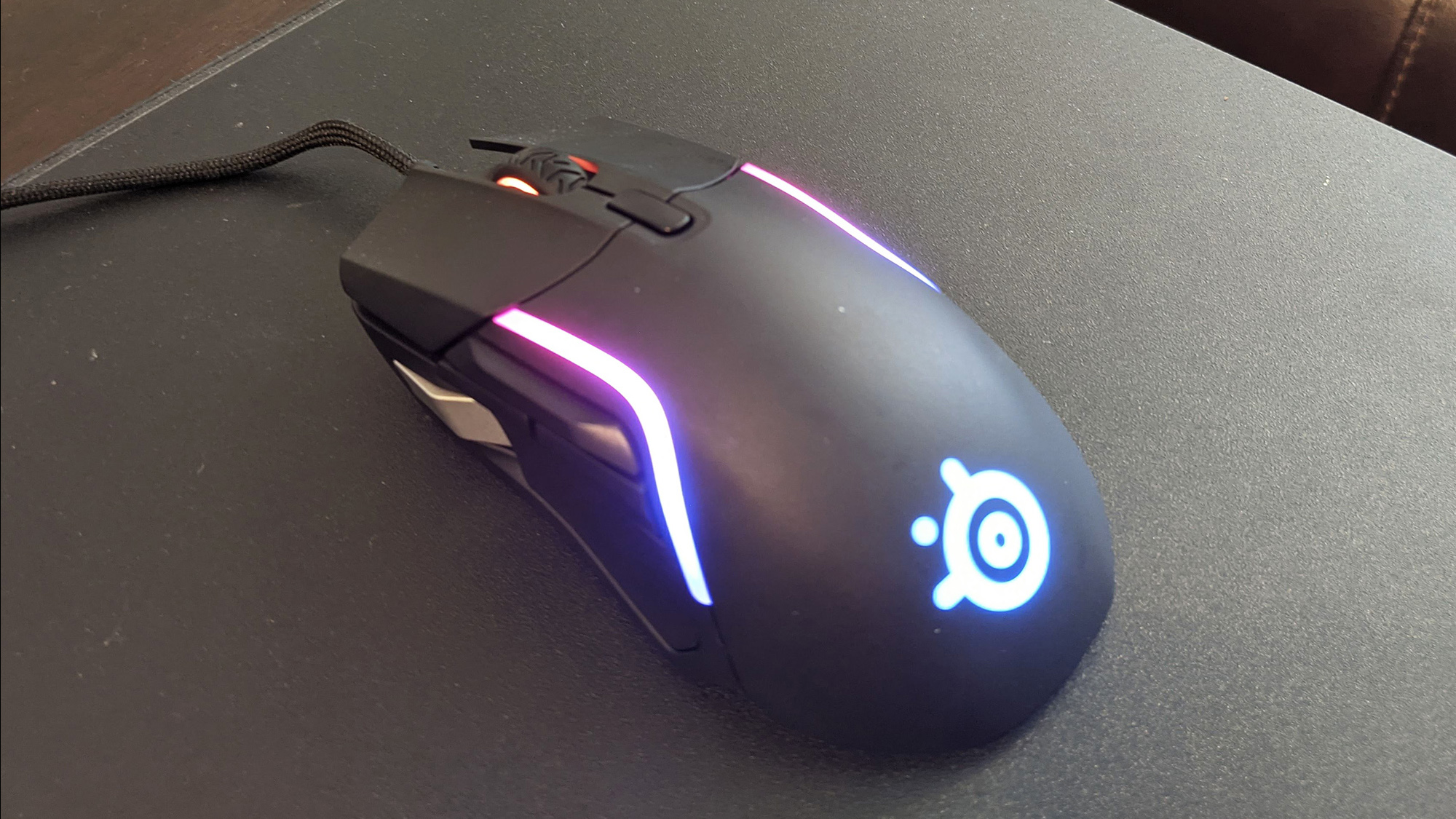
In terms of buttons, there are quite a few for a mouse of this size. In addition to the left and right buttons, you also get a clickable scroll wheel and a dots-per-inch (DPI) sensitivity adjuster right below that. On the left side of the mouse is where things get interesting, however. There are two thin thumb buttons, as well as a “sniper” thumb button that temporarily lowers DPI by default. That’s all pretty standard.
What’s unusual, however, is the small “paddle” button just above the two thumb buttons. The idea is that you rest your thumb on this long, thin button and press it either up or down for different effects. You could use this to zoom in or out with a sniper rifle, shift speed up or down in a racecar, toggle between weapons in an action/RPG or any other command that benefits from bidirectional controls.
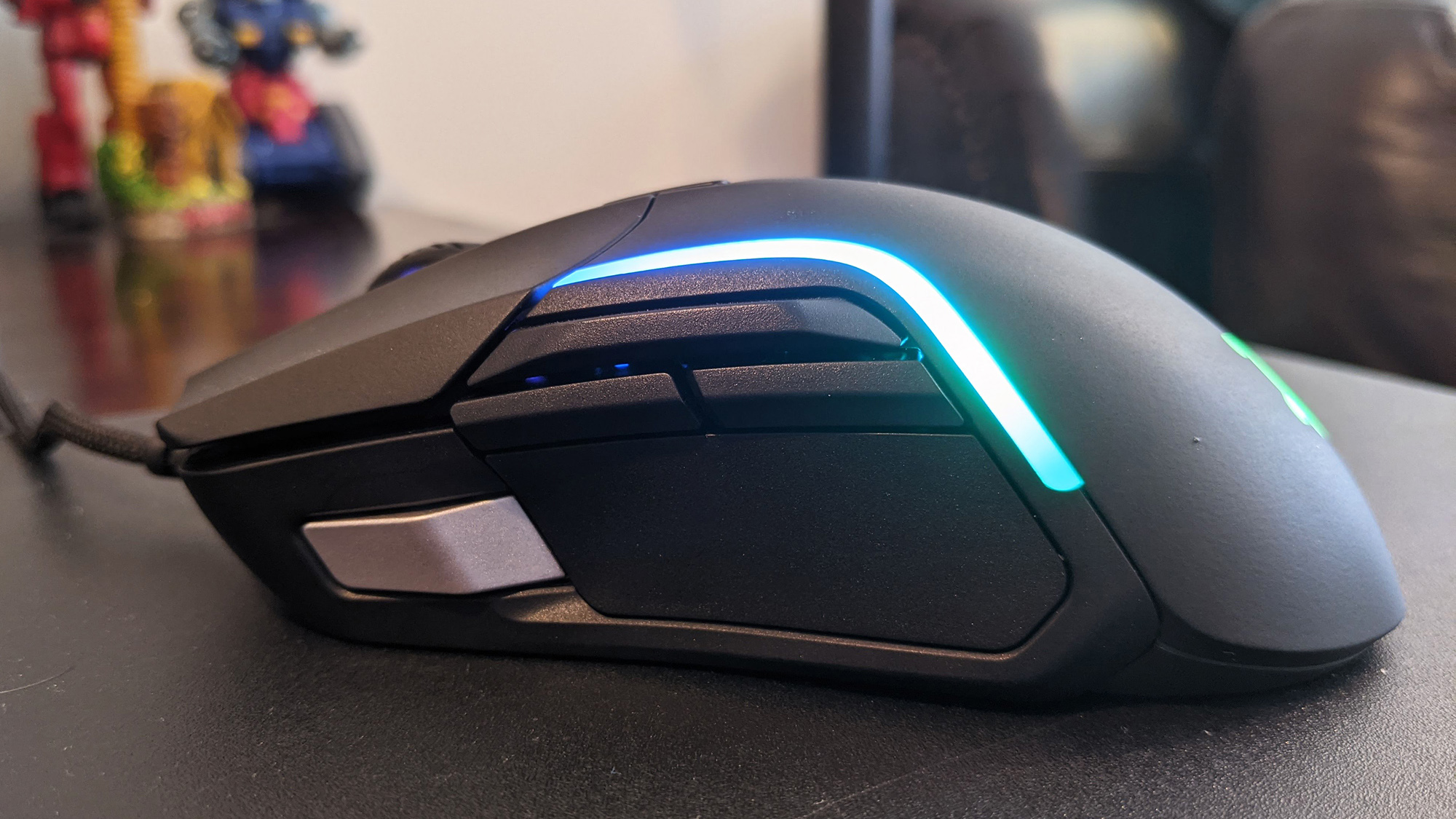
Paddles on gaming mice are not unheard of (the excellent Razer Basilisk has a slightly different one), but they’re not very common either. I respect SteelSeries adding an extra, uncommon potentially useful button to a mid-tier mouse. At the same time, I never found it especially useful, as the scroll wheel can do a lot of the same tasks. Furthermore, the paddle’s inclusion means that the thumb buttons are tiny. Differentiating between all three of them within a split second requires a pretty steep learning curve.
SteelSeries Rival 5 review: Features
In addition to its unconventional paddle, the SteelSeries Rival 5 has a few other interesting features, mostly software-based. Like other gear from this manufacturer, the Rival 5 runs on the SteelSeries Engine software, which recently underwent a pretty big revamp. The SteelSeries Engine has always been one of the better gaming peripheral programs on the market, letting you easily customize lighting, program button shortcuts and create profiles for individual games and apps.
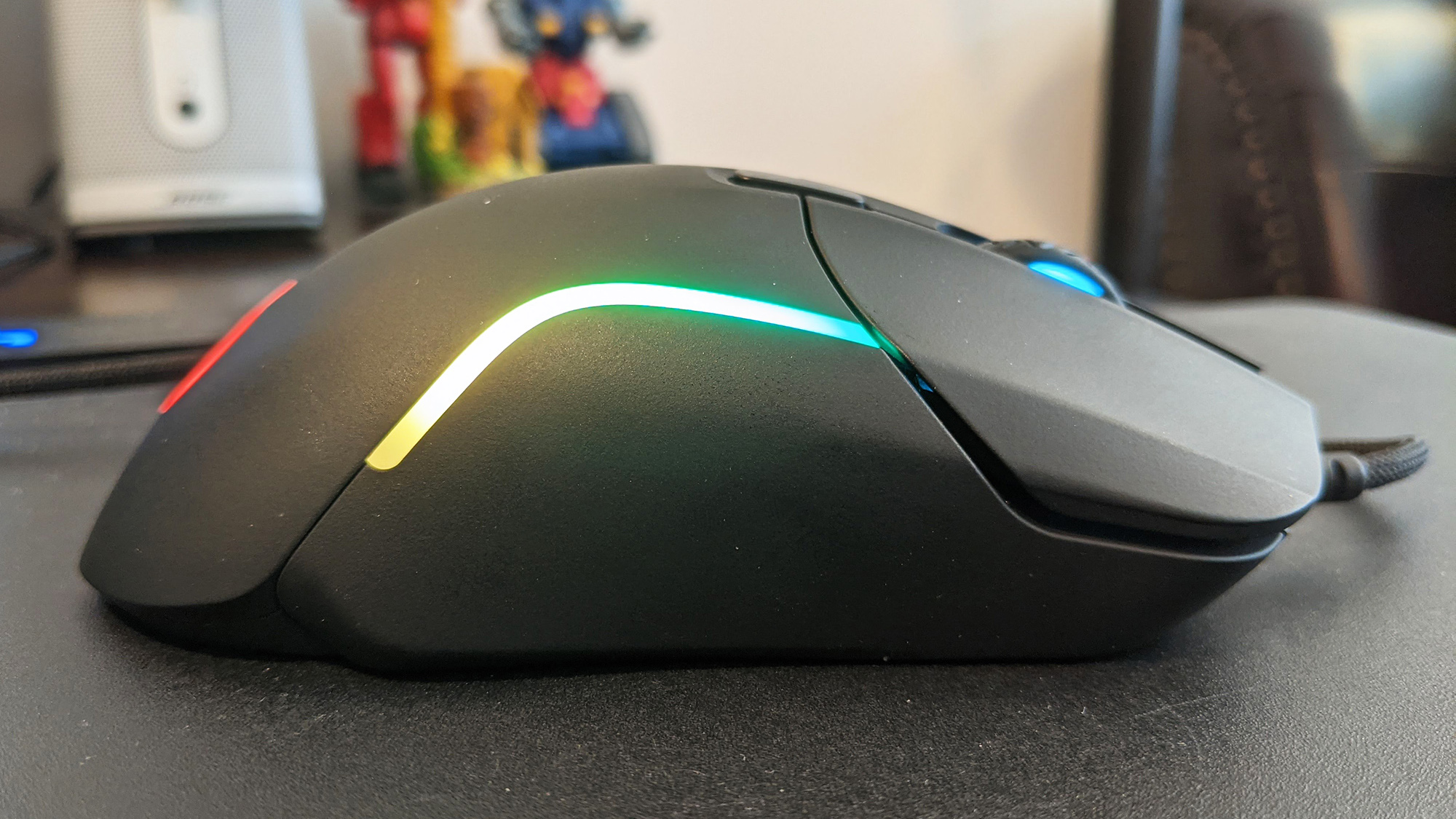
Using SteelSeries Engine is simple and intuitive, whether you want to reprogram the thumb buttons or adjust the DPI levels. (You can now program five or more different DPI levels; the previous iteration of Engine capped you at two.) The big draw, however, is that you can set up gorgeous lighting patterns on the Rival 5’s two bright, colorful LED strips. Whether you want a different static color for each game you play, or a pulsating rainbow while you work, having RGB lighting that you can actually see (unlike the palm logo, which your hand usually covers) makes a big difference.
My only complaint here is that some similar mice (mostly from Logitech) offer adjustable scroll wheels, which let you choose between tight scrolling for games, and more freeform scrolling for documents and websites. The Rival 5 has only one middle-of-the-road scroll wheel resistance setting, which isn’t ideal for either application.
SteelSeries Rival 5 review: Performance
Like other SteelSeries Gear, the Rival 5 performs beautifully in-game. I tested the peripheral with Age of Empires III: Definitive Edition, Doom Eternal, Baldur’s Gate III and Final Fantasy XIV, and found that it performed well in every genre. The mouse responded accurately to my commands, whether I was leaping around a battlefield to chainsaw demons in half, or wandering the streets of Ul’dah to gather MMO quests.
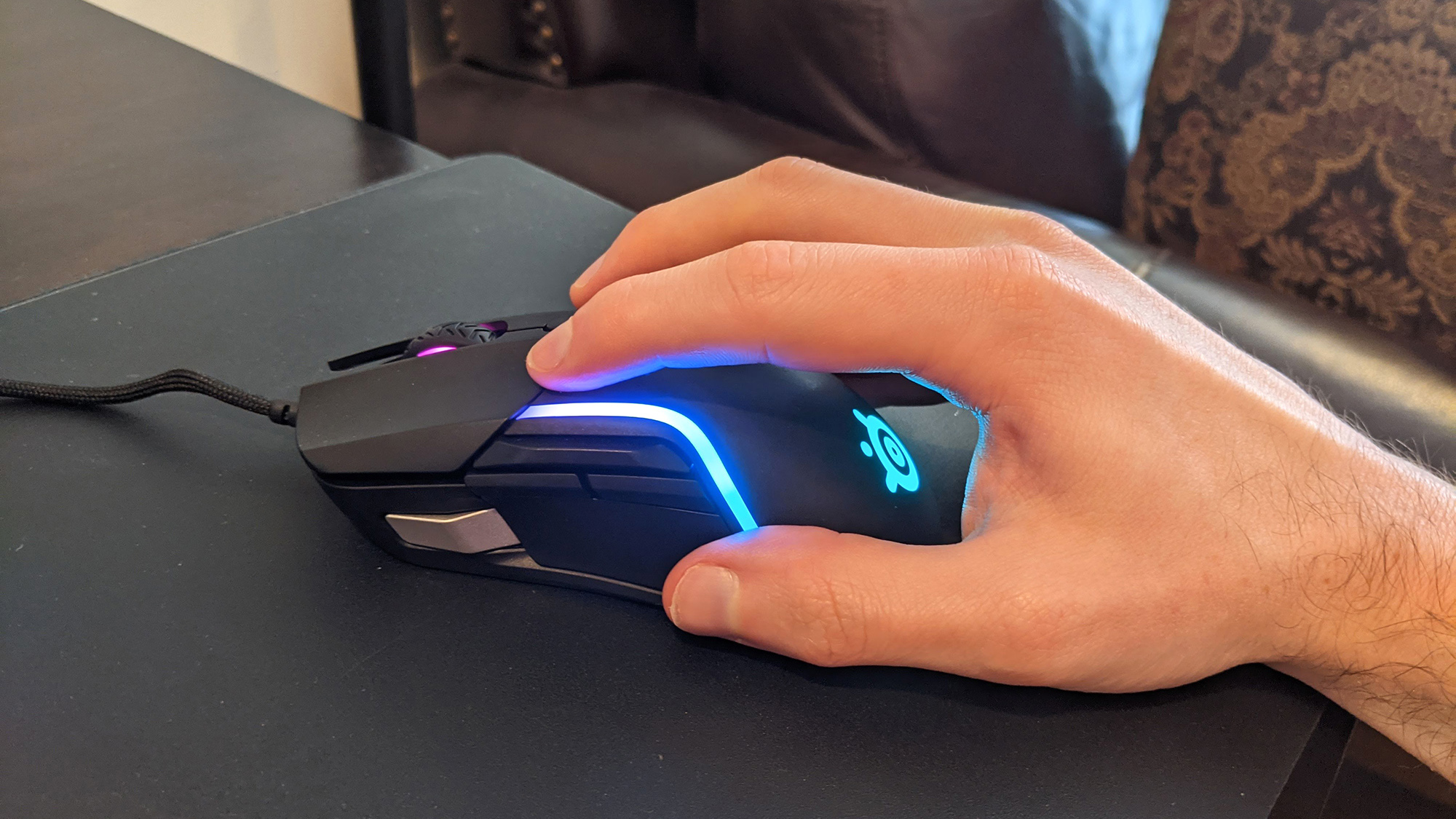
My only quibble is that I didn’t get much use out of the paddle in any genre I tested; the thumb buttons worked better for one-off commands, and the scroll wheel worked better for back-and-forth actions. I would have preferred bigger thumb buttons instead, but perhaps other players will find better applications for it.
SteelSeries Rival 5 review: Verdict
The SteelSeries Rival 5 is simply an excellent mouse, particularly for its modest price. It’s effective; it’s functional; it’s colorful. The only potential drawback is the unusual paddle button, though that may well be a draw for some fans.
If you’re willing to spend a little more money, the Rival 600 is a slightly better mouse overall, particularly due to its tunable weights. Likewise, the Logitech G502 is our gold standard for gaming mice, and usually available for around the same price as the Rival 5. But if you want something that’s both straightforward and packed with RGB lighting, the Rival 5 is an easy recommendation.
Marshall Honorof is a senior editor for Tom's Guide, overseeing the site's coverage of gaming hardware and software. He comes from a science writing background, having studied paleomammalogy, biological anthropology, and the history of science and technology. After hours, you can find him practicing taekwondo or doing deep dives on classic sci-fi.
